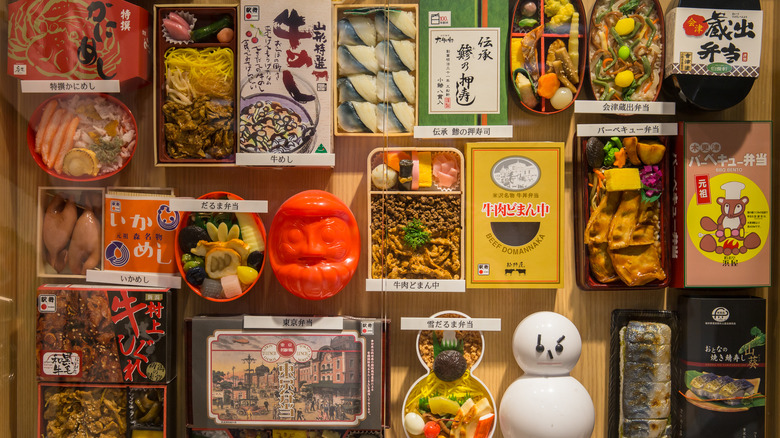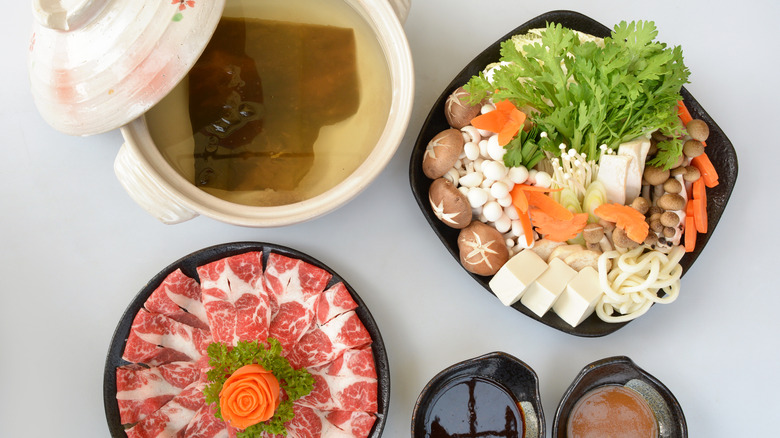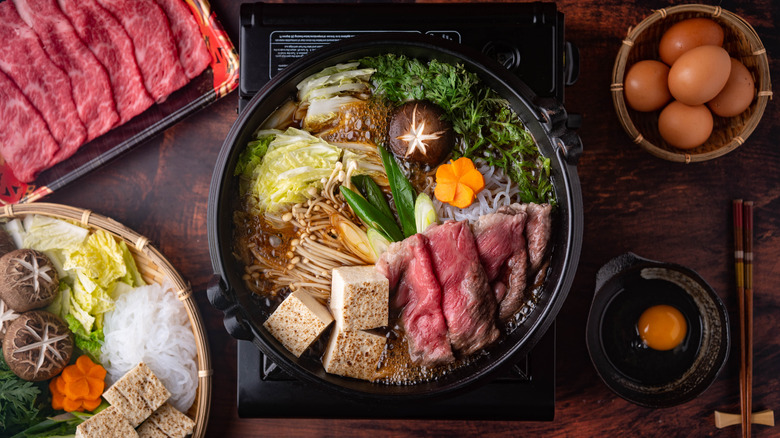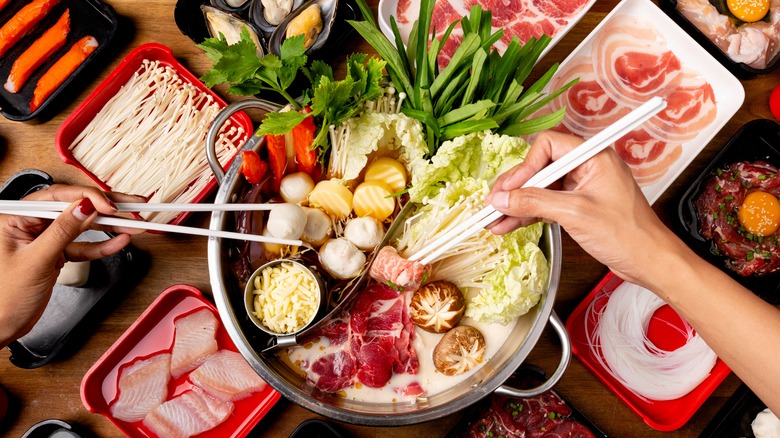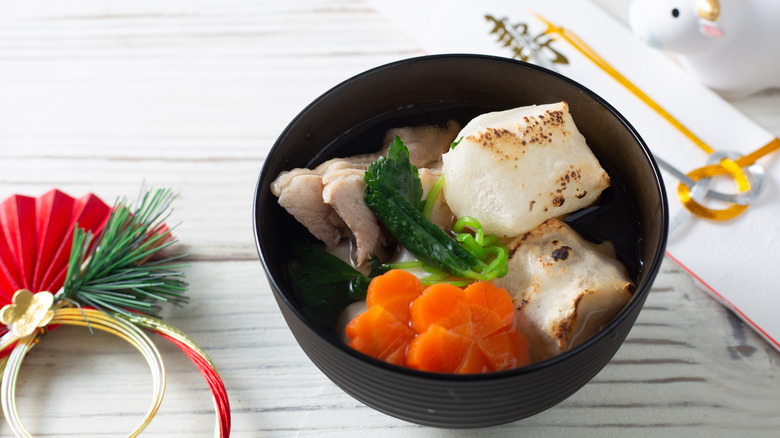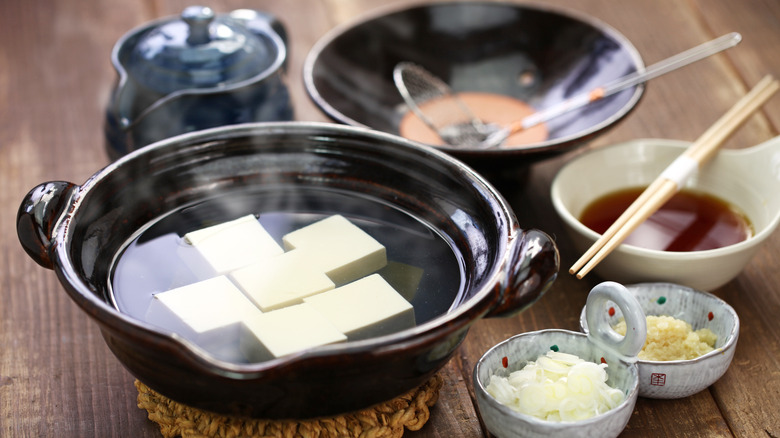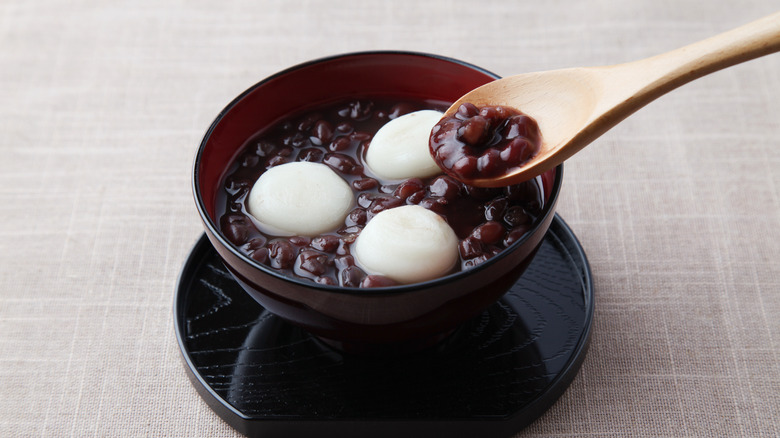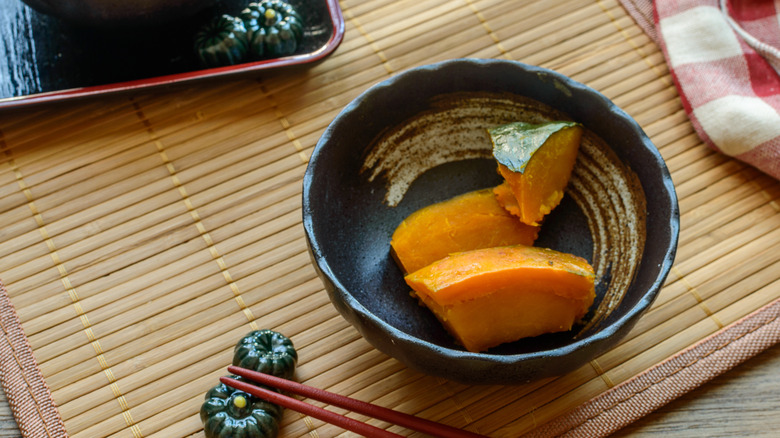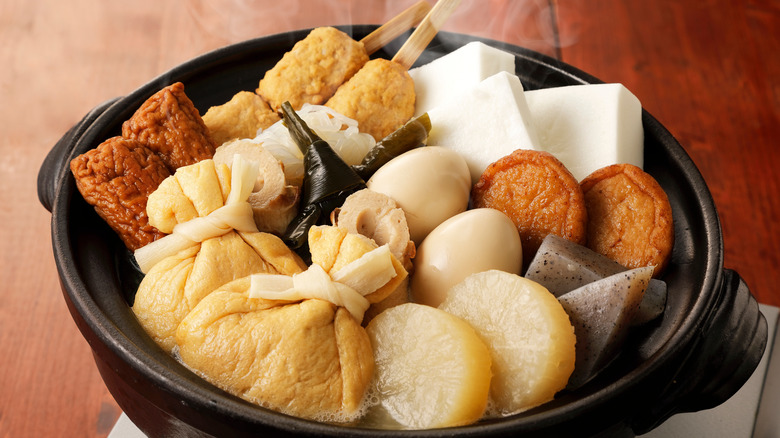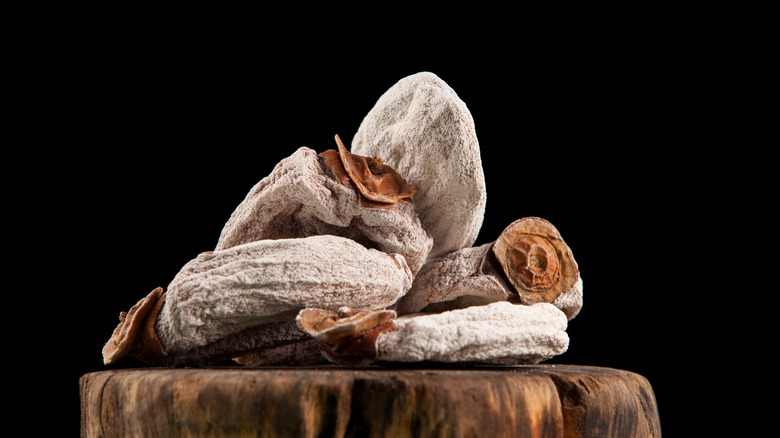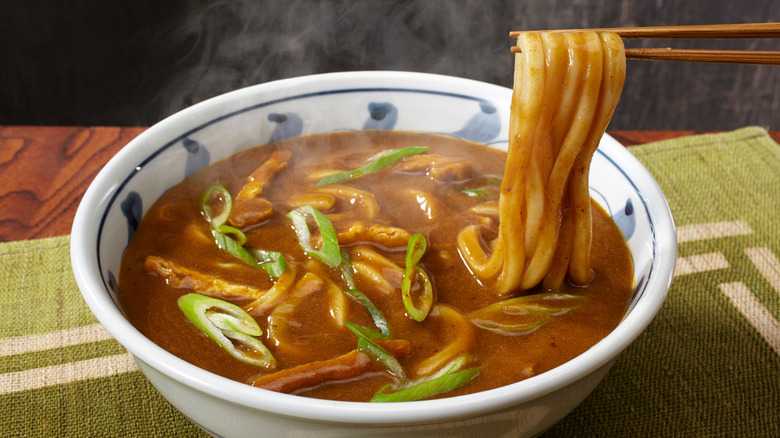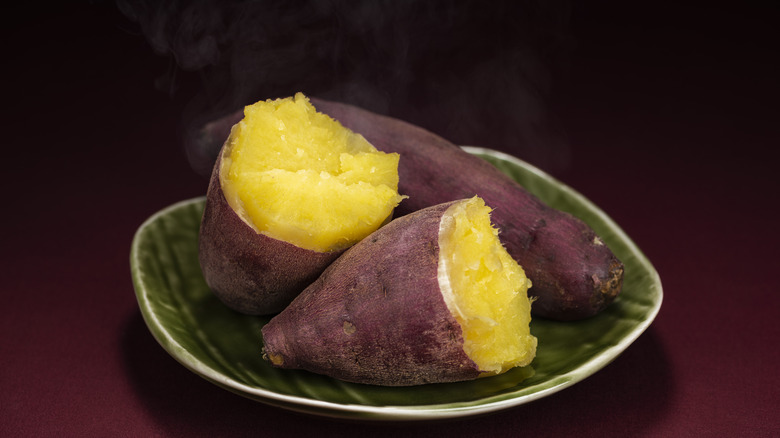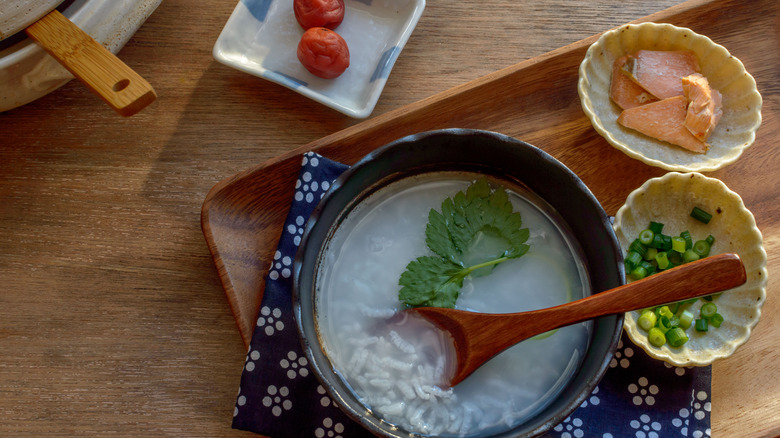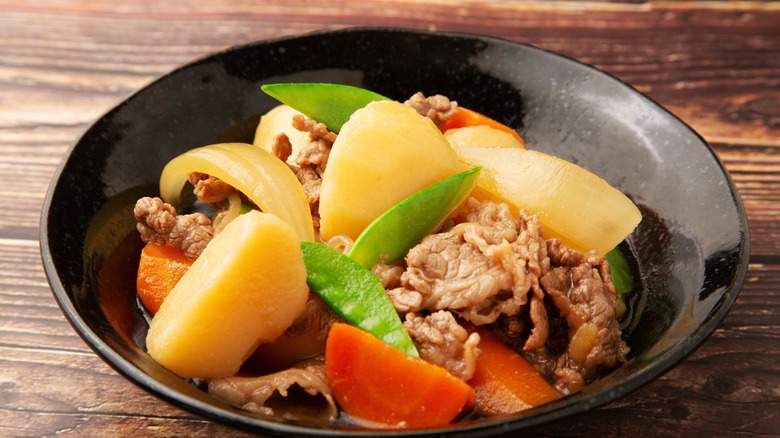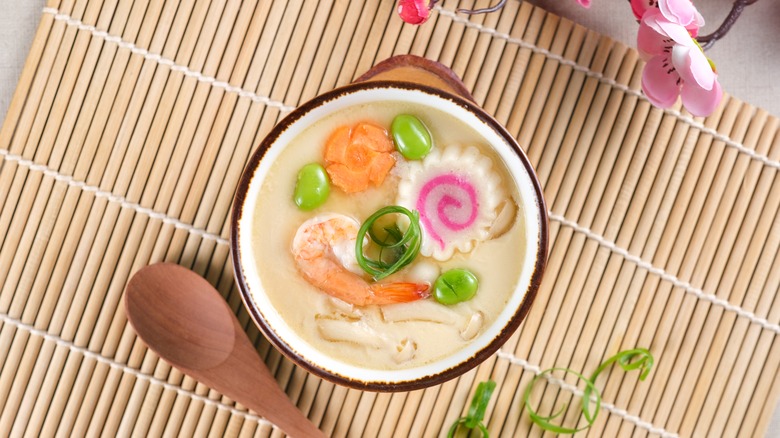14 Must-Try Japanese Winter Foods
From the northern island of Hokkaido, famous for its milk, skiing, and whisky, to the southern islands of Okinawa, Japan is a country with many regional cuisines and traditions. Nonetheless, some agreed-upon dishes are beloved by many. Whether in Sendai, Tokyo, Osaka, or Kumamoto, dishes like oden and ozoni are enjoyed by Japanese communities regardless of geography. Many foods date back to before the Edo period, while other dishes have more recent origins, stemming from European influence in Japan.
The staples in Japanese cooking: sake, mirin, soy sauce, miso, and dashi, are used to flavor many Japanese foods. These ingredients, in different ratios, are responsible for many of the Japanese flavors we love. The combination of sweet mirin, salty soy sauce, and umami sake, create irresistibly savory soups, hot pots, and stews. Especially in the winter months, when our bodies crave comfort and warmth, Japanese cuisine will undoubtedly satisfy you with scrumptious, nutritious, and filling dishes.
Nabemono
Nabe, or nabemono, is actually an umbrella term for any dish cooked in a donabe or Japanese clay pot. Nabe refers to "cooking pot," while mono means "things." As the name suggests, nabemono is a term used for just about anything cooked in a donabe.
Most versions of nabe, such as sukiyaki, oden, and yudofu, celebrate Japanese winter vegetables like mushrooms, napa cabbage, and squash, making the meals seasonal and hearty. They also commonly have some meat components, such as beef, pork, or fish cakes. Using staple Japanese seasonings, many nabemono flavors come from some combination of dashi, soy sauce, mirin, and sake.
The beauty of all nabemono is that it is truly a communal experience. Usually cooked in the center of the table on a portable burner, nabemono is a classic winter experience that brings people together during short, cold days. Making nabemono is exciting and rewarding because you get to choose what ingredients you want to add to the pot, and then you get to see it cook before your eyes. A great experience for the whole family or a dinner party, nabemono is the perfect winter food to keep you warm and satisfied.
Sukiyaki
Nothing signifies a fall day like the sweet, salty, umami smell of sukiyaki on the stove — or the portable burner on the table where the sukiyaki pot is perched. Sukiyaki, much like hot pot, is a dish comprised of many ingredients, simmered in a sweet and salty broth made from sugar, soy sauce, sake, and mirin. The sweet and salty broth of sukiyaki sets it apart from nabe and shabu shabu which have light, kombu-based broths. Unlike these alternatives, sukiyaki components come out of the pot already full of flavor.
Beef is one of the main components of sukiyaki, and depending on the region in Japan; the beef preparation can vary. In the Kanto region, the beef and vegetables are all cooked together in the same broth, while in the Kansai region, the beef is seared first before sugar and soy sauce are added. Aside from beef, other essential sukiyaki ingredients include chrysanthemum greens, tofu, enoki mushrooms, shiitake mushrooms, napa cabbage, green onion, and shirataki noodles.
The final step in the sukiyaki journey is to make an udon stir fry with the remaining dregs of sauce. The chewy udon noodles absorb all the delicious sugar, salt, and concentrated flavor from the other ingredients, resulting in a final course you won't miss.
Shabu shabu
Inspired by a Beijing dish called shuan yang rou, shabu shabu is a type of nabemono, meaning that it is simmered in a clay pot, usually on a portable burner in the middle of the dining table. Shabu shabu is very similar to both sukiyaki and hot pot in that the ingredients, namely meat and vegetables, are simmered in a flavored broth and then dipped in a sauce once they are cooked (via Restaurant Tokyo Guide). The purpose of having the shabu shabu pot in the middle of the table is to enable everyone who is participating in the meal to cook their own ingredients, especially the meat. The thin slices of meat can cook in a matter of minutes, so each person must be responsible for their own pieces, taking care to pull them out when almost fully cooked but not overdone.
Shabu shabu can also be made with vegetables such as mushrooms, carrots, and napa cabbage and is always served with rice. To make shabu shabu, the first step is to gather a group of people. Like other communal donabe dishes, shabu shabu is best shared with others, which transforms it from a simple meal into a beautiful gathering.
Ozoni
Made specifically for the new year, ozoni is another dish that varies widely across Japan and often features regional ingredients. Ozoni, at its base, is a simple dashi soup with mochi, while some regions add white miso, carrots, spinach, red beans, or fish (via Shun Gate).
One large difference between the Kanto and Kansai regions is how they prefer the shape of their mochi. In the Kanto region, which includes Tokyo, square mochi is traditionally used. It is believed that this square shape rose in popularity because it was more efficient to produce for the large population of Edo (current day Tokyo). In the Kansai region, which includes Kyoto and Osaka, there is a strong preference for round mochi and ozoni flavored slightly with miso.
As much as ozoni varies by region, it also varies by household and family recipe. To make ozoni, each ingredient is treated with delicacy and respect. If carrots are used, they are usually cut with a cookie cutter into a flower shape, and the soup is traditionally served in lacquered bowls to match the Oseshi or new years feast (via Matcha Jp).
Yudofu
One of the most elegant, yet simple Japanese dishes out there, yudofu is also ready in under 15 minutes, making it a delicious, nutritious, and time-efficient meal. Consisting of three main ingredients, tofu, kombu, and water, yudofu is remarkably easy to make and can be spruced up with a variety of sauces made from ponzu or miso.
The origins of yudofu stem back to Buddhist monks who introduced yudofu to Kyoto cuisine when they came to Japan from China, as per Zojirushi. These monks, banned from eating meat or fish, savored the warmth of the broth and the tenderness of the tofu. Over the years, yudofu became a dish widely enjoyed by the general public, not only Buddhist monks. This appreciation earned yudofu a place as one of Japan's staple winter meals.
But be careful. As simple as yudofu is, each ingredient must shine in its own way. Therefore, if you are going to make this at home, get the proper type of tofu, a medium-firm variety, and a high-quality kombu. This way, you will be able to taste the kombu's signature sea flavor and the tofu's slight sweetness.
Zenzai
Zenzai, the perfect combination of chewy, salty, smooth, sweet, nutty, and warm, is a winter dessert stew. Dessert and stew may sound oxymoronic to some, but this dish will convert any non-believer.
Made from a base of sweet red beans, with an island of mochi floating in the middle, zenzai is truly a textural and flavorful delight. Zenzai is made by boiling azuki beans and slowly sweetening them as they soften. Then, when they are fully cooked, bowls of zenzai are served with grilled mochi on top. It should come as no surprise that zenzai varies by region across Japan. According to Food in Japan, zenzai can refer to either the dish or the bean paste, depending on where you are in Japan. A common variation of zenzai is oshiruko which has the same components of zenzai, the sweet azuki beans and chewy mochi. What differentiates oshiruko is that it takes on more of a true soup consistency, while zenzai remains thick.
Kabocha nimono
Arguably the best variety of squash, kabocha are dense, ultra flavorful, and unbelievably creamy. Due to its amazing flavor, kabocha is also very versatile and can be used in just about any squash dish. They are great roasting squashes and make a delightful squash curry. Kabocha nimono is a traditional dish that celebrates all of the inherent beauty of this squash by cooking it down into an even silkier consistency, thus bringing out the natural sweetness and nuttiness.
Nimono refers to a cooking style that can feature almost any vegetable, although it is usually reserved for winter vegetables. If you remember from nabemono, mono means "things" in Japanese, so nimono also refers to "things," but this time simmered in a sweet and salty dashi broth. Just One Cookbook explains that kabocha nimono is one of the most popular types of nimono, and can be commonly found as a component in Japanese breakfasts or bento boxes sold in train stations.
What makes kabocha nimono so irresistible is the broth, a combination of kastuo dashi, sake, soy sauce, and sugar. The squash is simmered in these ingredients until it is incredibly tender and full of umami flavors. Kabocha nimono perches perfectly on the fence between savory and sweet, with the squash's soft texture adding an irresistible creaminess and the sugar in the broth bringing out the rich flavor of the kabocha.
Oden
Perhaps one of the most iconic Japanese winter dishes, oden is a classic comfort food for many Japanese people. The beauty of oden is that it is not just one thing. On the contrary, it is many things, like eggs, fish cakes, daikon, mochi, tofu, konyaku, and more.
Oden, as we know it today, stems from the late Edo period (1603-1868) but has roots that go back to the Muromachi period (1336-1573) (via Food in Japan). Since this time, oden has transformed in different regions to feature local specialties such as the octopus and beef that are often found in Osaka's oden. Oden is made by simmering all of your components in a donabe, or clay pot, in kombu dashi, soy sauce, sake, and mirin broth. One very common, if not country-wide oden ingredient is nerimono, a general name for fish cakes and fish balls which bring a signature chew and seafood flavor to oden. If you want to try oden in North America, it is available at some Japanese restaurants like Torihei in Los Angeles.
Some items, such as daikon and konyaku, must be boiled beforehand to ensure that they absorb all of the delicious flavors. Furthermore, you need to be careful not to over-simmer your oden because no one wants over-hydrated fish cakes. Oden, in all of its glory, is often served with hot mustard, which adds a little punch to this otherwise comforting, warm food.
Hoshigaki
Hoshigaki is a unique, technical delicacy often gifted at the New Year. But what is it? Hoshigaki is a Japanese method of drying persimmons where the natural sugar crystalizes and almost candies the fruit, preserving it and concentrating the flavor and texture. The first thing that sets hoshigaki apart is that it uses hachiya persimmons rather than fuyu, the more common persimmon for eating.
To make hoshigaki, you must dedicate at least six weeks to the process and carve out a little alcove to hang them in as they slowly dry. The persimmons are first peeled, boiled for sterilization, and then massaged daily until the natural sugars bloom (via UC Davis). When the sugar does bloom, it can often look like mold. But as the crystals spread along the shriveled skin, it becomes clear that what is actually happening is that the hoshigaki are transforming into winter beauties. The final hoshigaki are long, wrinkled, and almost entirely white from the sugar, with no resemblance to the original hachiya persimmon.
Hoshigaki are important to Japanese culture for a multitude of reasons. The meticulous, labor-intensive process required to make them represents Japanese culture's appreciation for hard work and perfection. Additionally, being one of the first known sweets in Japanese cuisine, hoshigaki signify a long life and are often traditionally placed as offerings during the new year.
Curry udon
You may be familiar with Japanese curry or other variations of it, such as Japanese curry shakshuka, but what will really blow your mind is this hybrid dish: curry udon. Curry udon is just what it sounds like, curry and udon. The thick, wheat udon noodles swim in a Japanese curry gravy to combine two staple Japanese dishes.
Japanese curry has a long, fascinating history that dates back to the 1800s. As per Vice, Japanese curry was introduced to Japan by the British, who created their own mild version of Indian curries when they colonized what is now known as India. Consequently, Japanese curry is equally as mild in spice, slightly thicker than other curries, and remarkably flavorful. It is almost impossible to make Japanese curry without store-bought curry roux cubes, which are concentrated spice cubes, and are used by many families across Japan. To make curry udon, cook down your curry ingredients, such as onions, peas, potatoes, or meat, and then add in the roux and water. Be sure to add more water for curry udon than you would for curry rice because the broth for curry udon must be much thinner. Once all the components come together, you can serve your curry by scooping it over a bowl of cooked udon and garnishing it with green onions.
Yakiimo
Yakiimo is Japanese yams, purple on the outside and yellow on the inside, and generally slowly roasted or baked whole. This cooking process is a classic and easy way to bring out the yam's natural sweetness. Often roasted over open coals, yakiimo sometimes has a hint of smokiness that perfectly compliments the sweetness and velvety texture. The slow cooking time allows for the starches in the potato to break down and almost caramelize, further contributing to the yam's naturally sweet taste.
During the wintertime, yakiimo is a staple food in Japan. You can find them being sold on the streets from the back of trucks or from small carts carrying red lanterns. They are also often sold at convenience stores or supermarkets in small warming boxes. However you acquire your yakiimo, it is sure to be delicious. Like many beloved Japanese foods, the beauty of yakiimo is in its simplicity. Made solely from yams, yakiimo truly celebrates the natural flavor, sweetness, and nuttiness of the yams, making for a comforting mouthful of soft, silky potato. You can also eat your yakiimo with a small amount of salt, which further bridges the gap between yakiimo being a sweet and salty snack.
Okayu
Many cultures have versions of rice porridge, and Japan is no different. Called okayu in Japanese, but very similar to Chinese congee and Korean dak juk, okayu is made by cooking rice in anywhere from five to 20 times more water than rice, as per Japanese Cooking 101. Often served as breakfast food during the winter or for anyone who is not feeling well, okayu is a comforting, easy-to-digest dish that can be spruced up however you wish.
Some common toppings for okayu include sesame seeds, umebosi, mitsuba (Japanese parsley), and salted salmon (via Just One Cookbook). Although okayu can be topped with anything, it adopts fewer variations than its cousin dish, congee, which can be found topped with eggs, meat, and even thanksgiving leftovers. Chef Nami, of Just One Cookbook, explains that okayu is usually reserved as a healing food and, therefore, often remains fairly bland so as not to upset a person's stomach.
Nikujaga
Nikujaga is a warm bowl of comfort. Featuring large chunks of potato, carrots, and slivers of meat, nikujaga is filling, savory, nutritious, and oh-so comforting. First created in the 19th century by chefs in the Japanese imperial navy who were inspired by British stew, nikujaga is a perfect example of "yoshoku." Yoshoku dishes are Japanese foods that were inspired by Western cuisine, so in short, yoshoku is the Japanese version of fusion foods. Nikujaga is one of the first examples of yoshoku foods, with another common example being Japanese curry (via Zojirushi).
To make nikujaga, you must have four main ingredients: potato, beef slices, carrots, and konyaku. These ingredients are all simmered in a sweet soy sauce, sake, and dashi broth until they are tender and filled with the sweet, umami flavor. Unlike sukiyaki, oden, or nimono, the broth of nikujaga simmers away almost entirely, leaving a stew that is concentrated in flavor and irresistibly delicious.
Chawanmushi
Chawanmushi is perhaps one of the most comforting and delightful dishes out there. While that is a bold statement, anyone who has had a good chawanmushi will probably agree. These steamed egg custards are flavored with dashi and soy sauce and can be topped with almost anything. Common variations of chawanmushi feature seafood, mushrooms, fish cakes, carrots, or ginkgo nuts.
"Chawan" means tea cup, while "mushi" means steamed. Therefore, chawanmushi means things steamed in tea cups, and in this case, it refers to silky, savory, delightfully steamed eggs. According to the Chopstick Chronicles, the key to making a truly delicious chawanmushi is in flavoring. You must add enough soy sauce, or else your eggs will be too salty and ruin the dish's delicate flavor. You must also be careful to add enough soy sauce to ensure that your chawanmushi is not bland. When cooking your chawanmushi, you must also be careful to steam them gently. This will ensure that the final dish is silky and dense, not spongy.
